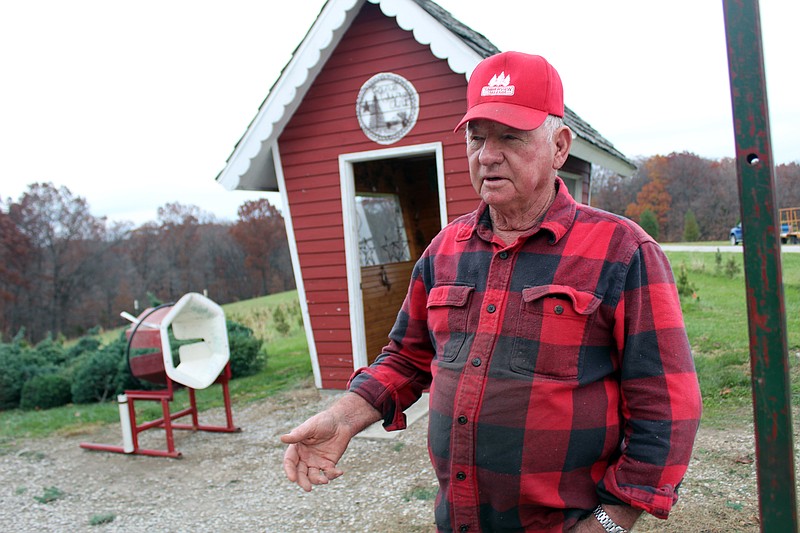HARTSBURG — Getting your living room Christmas-ready involves lights, ornaments and perhaps a popcorn string or two. Getting your tree to that point took rainfall, trimming and plenty of time.
Staff at Hartsburg’s Timber View Tree Farm manage a long-term rotation program. That means the 6- to 8-inch seedlings they plant each spring won’t be fully grown for several years, and a new one won’t take its spot for about a decade.
“It takes at least six years before you can cut a Christmas tree,” owner Daryll Raitt said.
Timber View is home to 150 acres of farmland, 40 of which contain trees. A favorite is Scotch pine, an evergreen with sharp needles that is native to Europe.
“They’re the ones that tend to do the best for us,” Raitt said.
The Raitt family formally opened the business in 1972, a few years after they’d started planting trees.
Say you decide to start your own Christmas tree farm. Don’t expect to turn a profit overnight. Instead, prepare for about five to six years of expenses and work before you can sell your first tree. It will be a risky half-decade, too. As with any agricultural commodity, cultivation is at the mercy of Mother Nature.
Timber View staff plants about 1,500-2,000 seedlings each spring. Now a few months old, those youngest trees have neighbors of various ages.
Pointing toward a 3-year-old tree near Timber View’s main entrance, Raitt described his method for determining that age: clusters of branches surround the trunk in what you might describe as levels. That tree had three of those sets of limbs. Its 3-foot height provided another clue: Scotch pine grow about a foot a year.
The most important factor at all growth stages, Raitt said, is “mainly that you get adequate moisture at a time when you need it.”
He added, “That isn’t always the case in Missouri. … You’d like to get a little rain every week in the summer. What you don’t want is a month of drought or anything like that.”
The farmer experimented with an irrigation system a few years ago, but he found its maintenance more trouble than it was worth. Before and since then, his trees have relied on rainfall.
Meanwhile, there’s routine branch-cutting: “Each tree has to be trimmed every year or else they won’t be sale-able,” he said.
Then there’s disease prevention. The Raitts are particularly concerned with brown spot, a fungus that discolors needles. Last year damage from the disease forced them to burn piles of damaged trees. This year, they sprayed fungicide three times, introducing new chemicals as the fungus evolved a tolerance to the old ones.
White scale, another tree nuisance, is often mistaken for a disease but is typically a sign of an insect infestation. Treatment involves importing a species of beetle with a taste for the bug, then scattering it throughout the farm.
“It’ll turn a tree completely white if you don’t take care of it,” Raitt said.
Timber View opened to the public Friday. Visitors can chop their own tree or purchase one already harvested.
But why buy a live Christmas tree at all, when artificial ones are in abundant supply at local stores and can last for years in your basement? There are aesthetic reasons such as the fresh pine smell. Although you can’t reuse it next Christmas, you can certainly recycle it into mulch — a post-Christmas live tree doesn’t have to take up space in a landfill as an artificial one eventually would.
Chopping down a tree is not necessarily hurting the environment either. If the tree was planted with the intention of being cut and a new one is planted soon after, you could essentially compare the process to planting and harvesting corn.
“An artificial tree is really made out of an oil product,” Raitt said. “These trees, you’re just using land that wouldn’t be used for anything else except maybe pasture.”
Missouri is not among the country’s biggest Christmas tree producers. Figures from the U.S. Department of Agriculture’s National Agricultural Statistics Service indicate Oregon holds the country’s largest acreage of nursery crops. Other major tree-producing states include Michigan, North Carolina, Pennsylvania and Florida.
For more information about Timber View Tree Farm, call 573-636-5395 or visit their Facebook page, @timberview.treefarm.

